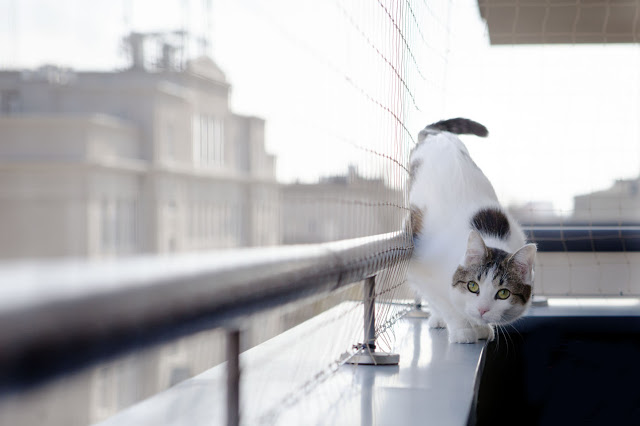Feeding cats
Feeding cats, kinds of cat foods and their ingredients, balanced diets and similar matters are often pondered by us, the animals’ owners. In this article I will focus on two aspects of feeding cats. Firstly I will explain why we should pay attention to the quality of the store-bought food and secondly I will clarify how to read the labels with ingredients to distinguish between various foods and assess them.
Everybody needs to eat … good food means healthy cat.
Everybody needs to eat but not everybody thinks of what they eat. These days more and more often we read food labels, analyze the ingredients, check where our daily coffee comes from and whether the hens our eggs are from where free-range or not. In my opinion it is an excellent habit and a necessary one whenever we buy food. The necessity comes from the fact that food manufacturers often try to cheat us, their customers, by giving us food substitutes in a nice packaging using words that present these substitutes as superb nutrition. Food industry spends millions on beautiful packaging, huge marketing campaigns and fancy advertising to sell their products.
Unfortunately the problem with the animal foods is even worse. There are fewer restrictions for the producers, the owners often have little or no time to read all the labels and the animals cannot tell us that there is something wrong with the food they are getting so they just have to eat it.
Why should we care about the food our cats get?
Let me remind you … cats given good food are cats well fed not just stuffed with whatever and a well fed cat is a happy cat! Tasty and well balanced foods make healthy cats. Good foods in appropriate amounts make cat fur shiny and help maintain the right weight. Many of us think that better foods are more expensive so we will have to spend more but by giving our cat the right food we actually spend less. How? Healthy cats don’t need doctors and cats eat less when their food is well-balanced and nutritious. What is more, you can sometimes find good food that is cheaper than the over-advertised food made by well known companies you just need to look around more carefully.
I still remember the moment when I started paying attention to the food I was giving to my cats. As I was leaving work one cold November evening I noticed something moving in the rubbish dump. It turned out to be two little furry balls in surprisingly good health. I couldn’t leave them in the cold rain and without food so I took them home. First thing I did after bringing them home was going to the pet store to get them something to eat. I still remember how confused I was deciding which food to buy, trying to figure out if higher price meant better ingredients but I really couldn’t understand the labels. I decided to rely on the help and experience of the sales assistant. So I bought my first packet of Royal … and I remained loyal to that brand for the entire year. I didn’t consider any other brands or supplements, didn’t think if I should mix dry food with wet canned food … until one of my cats became seriously ill. He was highly anemic and I’m not saying it was because of the food I was giving him but it was a turning point for me. I decided that I need to know what my cats are eating and that was the last time I bought the brand mentioned above.
What to pay attention to, what do the producers do to make the food look good, how to choose the right food to have a healthy cat. Choosing the right food is not easy at all.
Food analytical composition
Every food label contains ingredients as well as the analytical composition. Analytical composition tells us the percentage of protein, fat, fiber, ash, phosphorus and calcium in the food. Most of us do not pay attention to this part of the label because it doesn’t mention ingredients. Every cat food contains all of the above ingredients but their sources are different. Here is the example of two foods of very different quality:
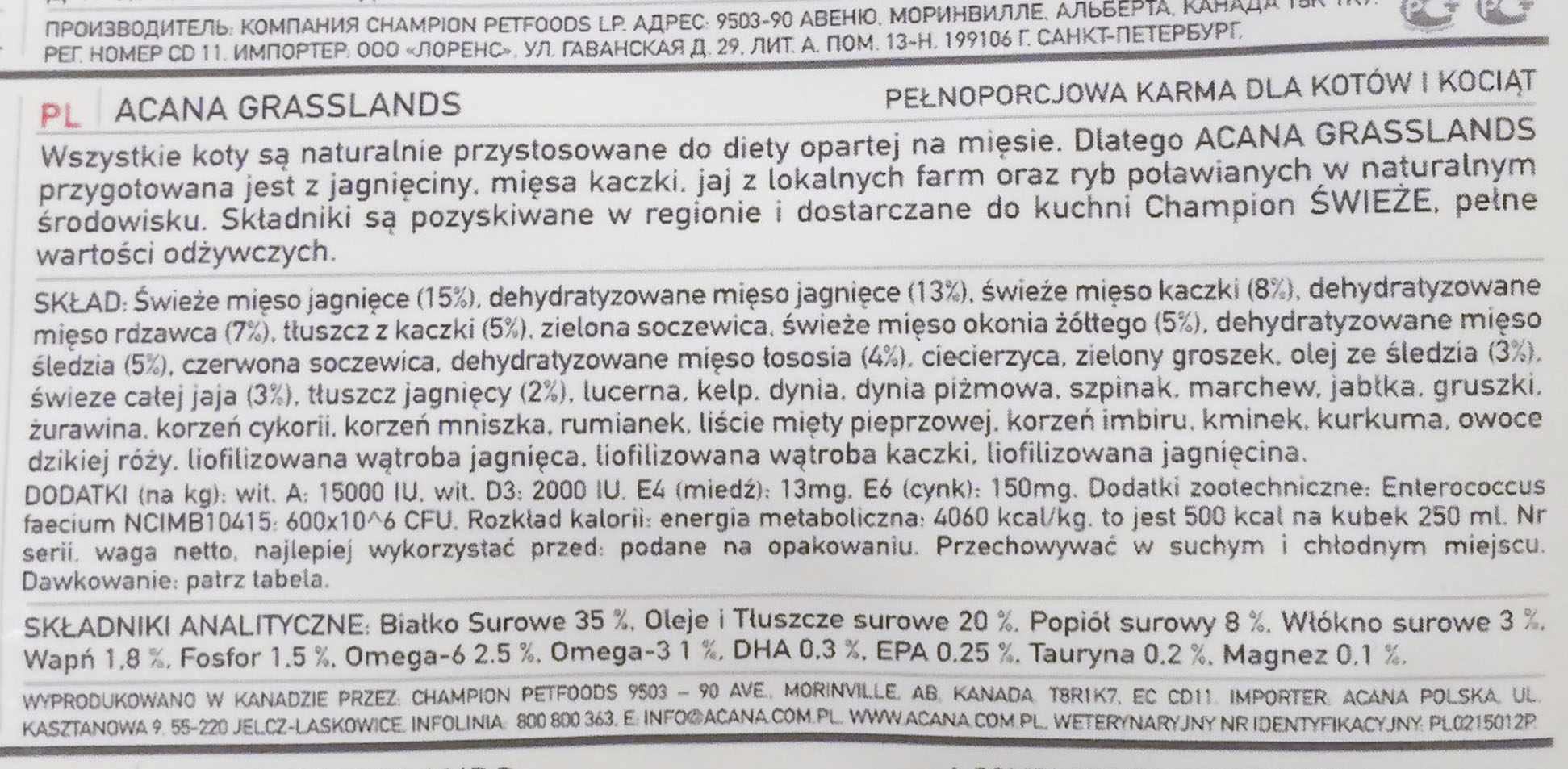
In this food, the percentage of protein is lower but almost all or all of it comes from meat – fresh lamb, dehydrated lamb, fresh duck, dehydrated pollack…yummy!!
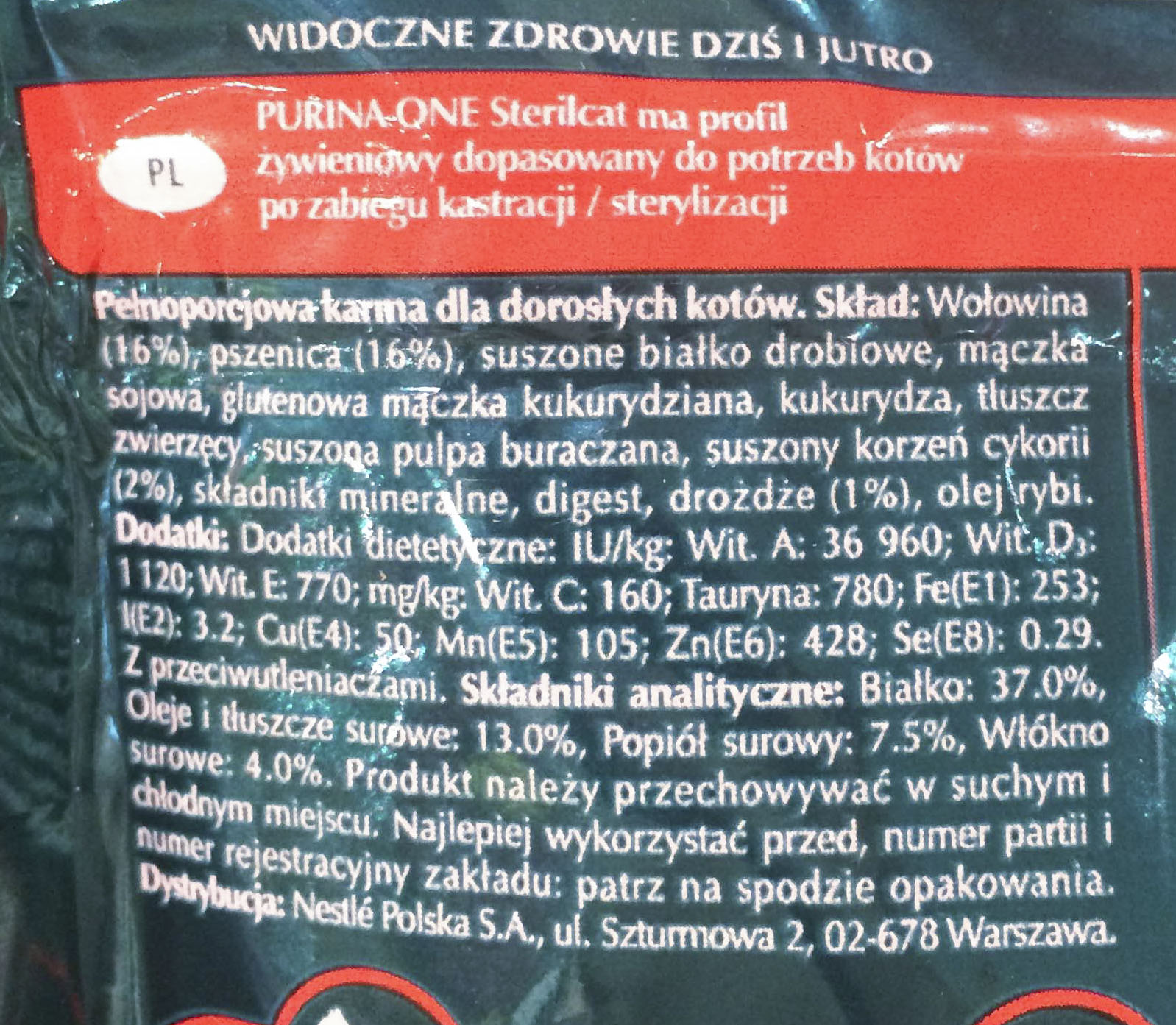
In the second food, there is 2% protein more than in the first food but most of it comes from wheat mentioned as a second ingredient, soybean meal, gluten-free corn meal and corn! Eew!!
The difference in ingredients is easily noticeable; however, the analytical composition looks very similar. The amount of protein in both foods is almost the same but its source is meat in the good food and grains in the other one. So it is important to pay attention to all the information placed on the label to know the sources of the analytical components. What is also interesting is that none of the labels mentions content of carbohydrates which are also an important part of a healthy diet.
Carbohydrates in cats’ foods
For quite awhile I was taking care of a diabetic cat. Such cats, as you might know, shouldn’t eat too much carbs to keep their sugars at the right level. Unfortunately most of cat foods contain too much carbs and it is too much not only for diabetic but also for healthy cats. Too much carbs can cause obesity in cats and lead to many diseases. If you want to know the carbs percentage of your pet food please input the analytical components from the label into this online calculator:
http://rankingkarm.pl/ilosc-weglowodanow-i-innych-skladnikow-w-suchej-masie-dmb/”>http://rankingkarm.pl/ilosc-weglowodanow-i-innych-skladnikow-w-suchej-masie-dmb
A good food shouldn’t have more than 15% of carbs. This is a norm for a healthy cat; a diabetic shouldn’t eat food with more than 10% of carbs.
When I was looking for food designed for diabetic cats all I found was food with too high carb content. Ultimately I was lucky to find the right food although not specifically prepared for diabetic cats.
Below is a label from food for diabetic cats – 28% carbs!!
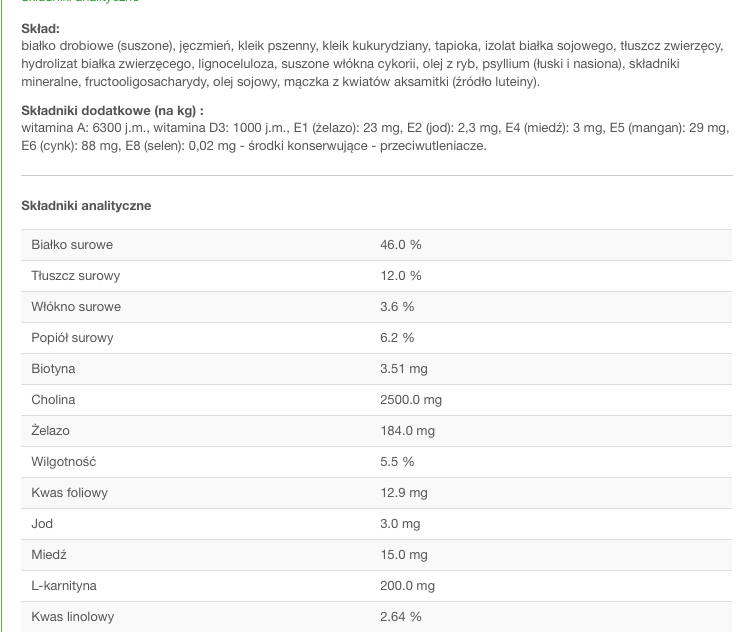
Additives
There are many additives in the pet foods. Probiotics are a very important additive yet very rarely found in pet foods. Probiotics are necessary to maintain bacterial flora in intestines and balance in digestive tract.
Another important ingredient is taurine which the free living cats get from eating rodents they catch but which our pets need to be given. Crucial are also calcium, phosphorus, magnesium and sodium as they are responsible for creation of stones in the bladder. There are many more elements indispensable to health of our pets, vitamins among them, but I won’t be listing all of them here.
When selecting food it could be beneficial to choose something containing fish as they are a great source of omega 3 and 6 necessary to ensure shiny fur coat; however, cats could be allergic to them. Same situation is with chicken. I recommend purchasing small portions of foods containing these meats and observing cats’ reactions – look for frequent scratching or unusual fur shedding.
Cat food and how much meat is in the meat?
I have described the food content in general and now I will analyze the wording/naming. The food industry hides the real content behind various names to make their products look good.
Meat in the food
Cats are carnivorous so when buying their food we should pay attention to how much unnecessary grain and how much real meat is in it. Foods containing less than 14% of meat are … for vegetarian. Proper cat food will have more than 25% of meat.
When estimating how much meat is in the food we can assume that the order in which the ingredients are listed should reflect their percentage in the content but this is just an assumption as the manufacturers do switch the ingredients around.
For example, if the food is mainly grain based but the makers want to hide it they can move the ingredients of animal origin to the beginning of the list. This way the food appears tasty and healthy although it definitely is not.
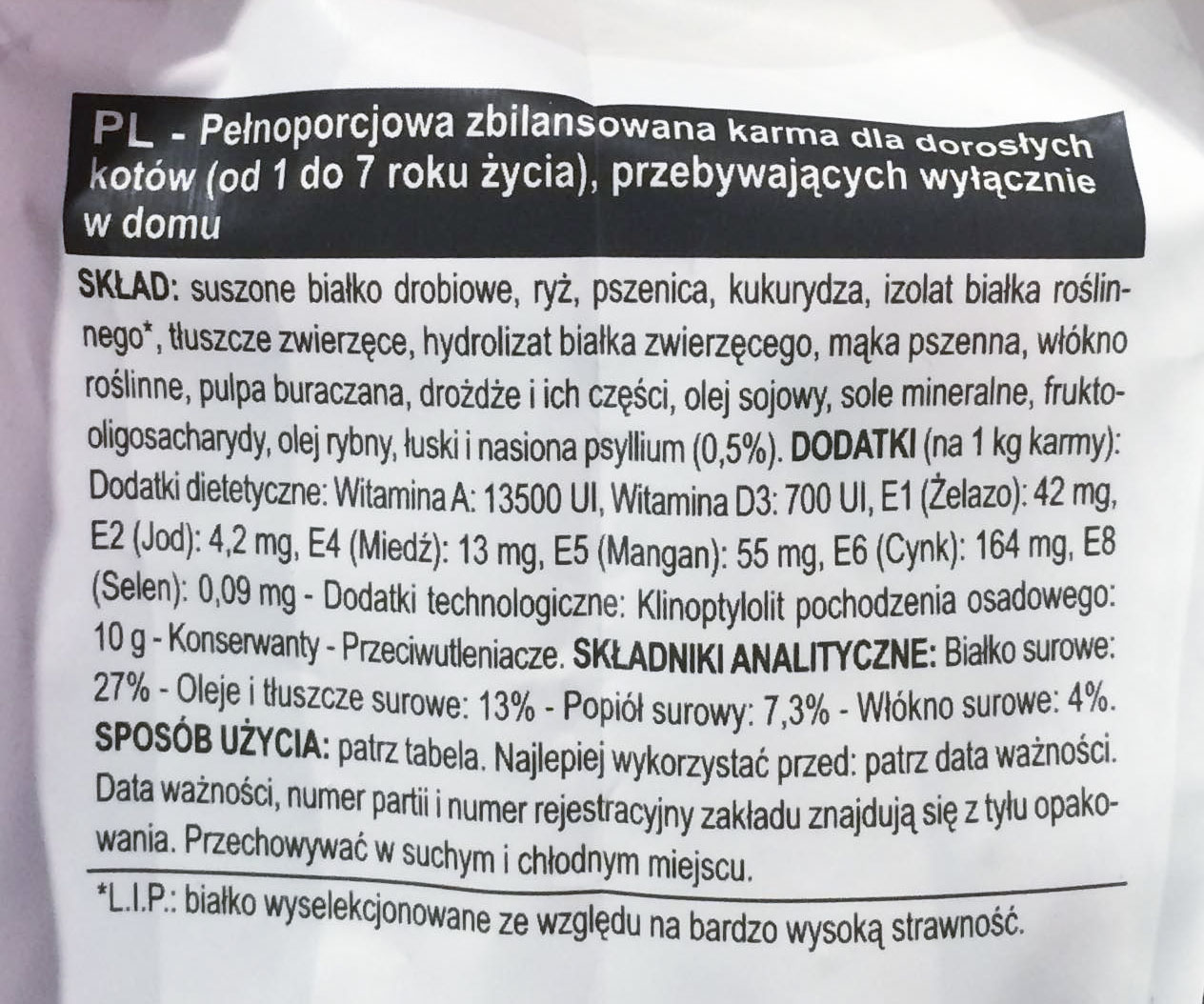
In this actually very expensive food there is rice, wheat, corn, wheat flour… if we put all these grains together they are definitively the main ingredient.
Also, this is food for domestic cats which don’t need as much energy so the carb content should be low. Well I checked and carbs constitute 46% of the analytical components. It seems that the manufacturer got it wrong or the food is for domestic cats running daily 10km.
Tricky is also the naming of meat. Not all meat used in the pet foods can be called meat. If the label says that the food contains 14% of chicken I begin to wonder which part of the chicken was actually used. Chicken has many body parts and they all can be called chicken including feathers and claws. It is much better if the ingredient list mentions chicken meat. However, fresh chicken meat is not good news either. If there is fresh chicken meat it means there is less of it than stated. It happens so because if we have 300g of fresh chicken and we dry it – process necessary for dry foods – there will be little chicken left after the water loss.
If the first ingredient is animal protein source it means it is protein of unknown origin and we don’t know what animals it comes from. It certainly is not a good quality meat because if it was the manufacturer would have proudly put it on the label.
And what about by-products of animal origin? It is a very popular ingredient in the cheapest foods and it usually does not go over 5% of the content. I don’t know if it is better that this ingredient is in the foods or the foods would be better without it… do I need to tell you what part of the animal it is? It is better not to imagine it.
What is meat or grain meal? Meal is a protein source and is a very popular ingredient of pet foods. Unfortunately producers do not need to tell us the origin of the meal so we don’t know what is in it. I don’t trust any meat or meat meal that comes from outside of the European Union.
Grains
Splitting one ingredient into few on food labels is quite a frequent practice. Grains are the best example of this practice. Often we can call most of the listed ingredients grains and they are the main content of the food. Since the producer should list the ingredients according to their content splitting grains into rice, wheat and corn allows the meat to be put on the top of the list.

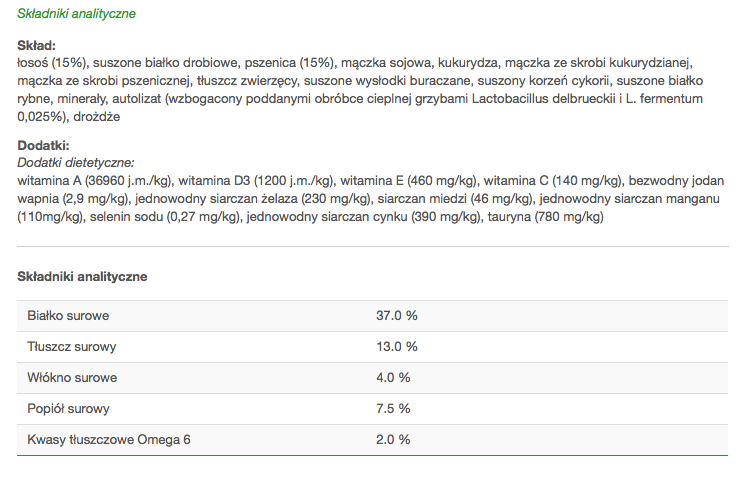
Below are few more ingredients which shouldn’t be in the pet foods:
Artificial preservatives – BHA, BHT, ethoxyquin or Propyl Gallate are cancerous, cause dry skin and can damage liver functions.
Flavors – added only to make cats think that they are eating meat that is not actually present in the food.
Sweeteners and malt – added to the foods to make the cats eat it readily so we think that food is tasty and healthy.
Also added are various substances to which our cats become addicted and don’t want to eat anything else.
Colorful foods such as red meat pieces or green vegetables were created only for our visual pleasure and not our cats’ needs. By putting the red meat or green veggie piece in the bowl of our cat we just give them unnecessary serving of food coloring.
I hope I explained the matters of store bought foods at least to some extend. As we all understand things best when given examples I will present the foods I recommend and those I find unacceptable in my next post.


